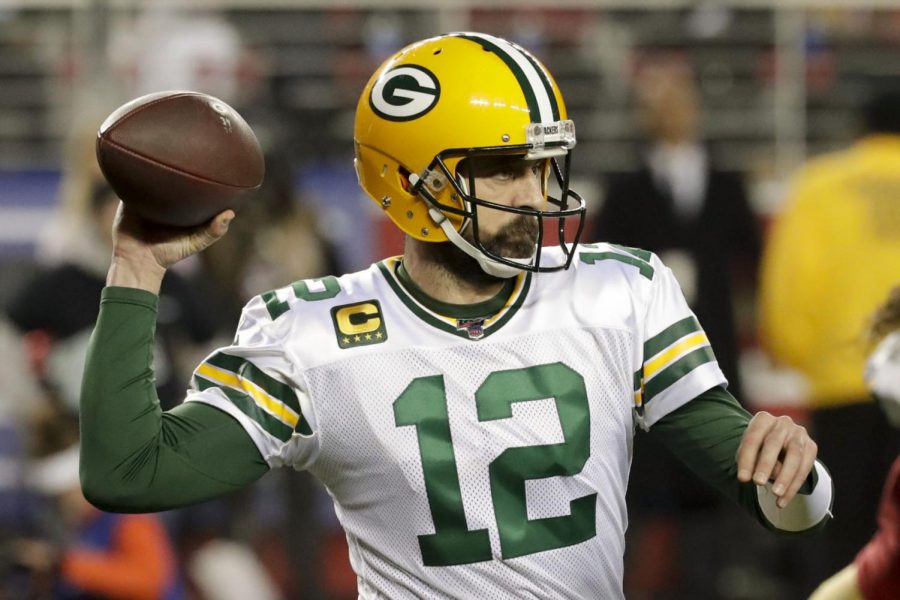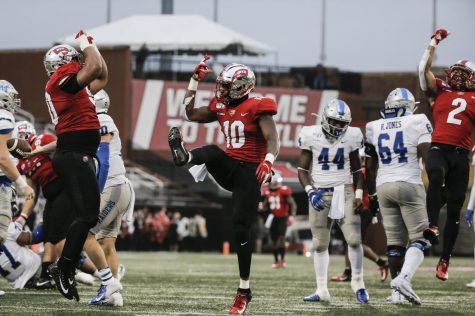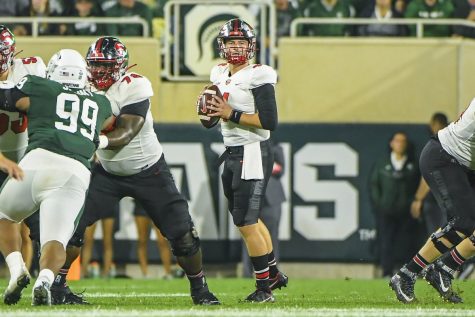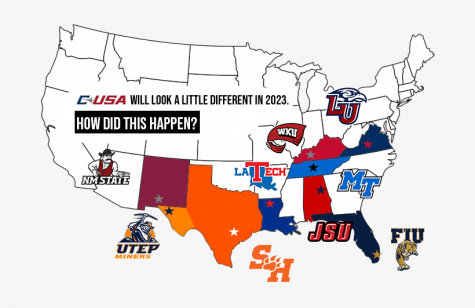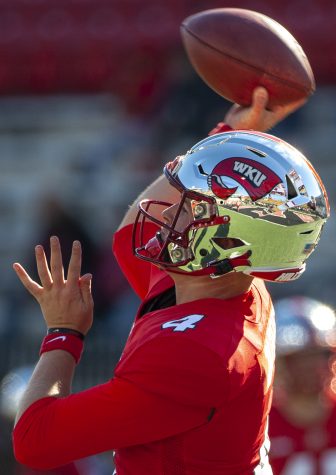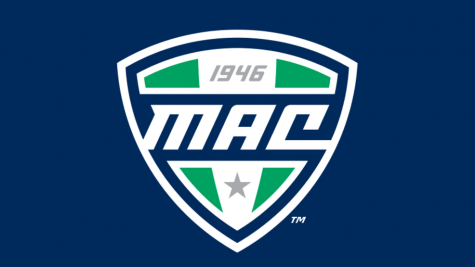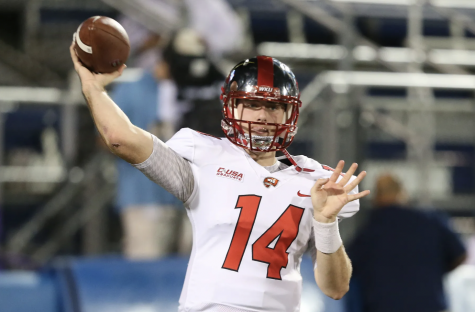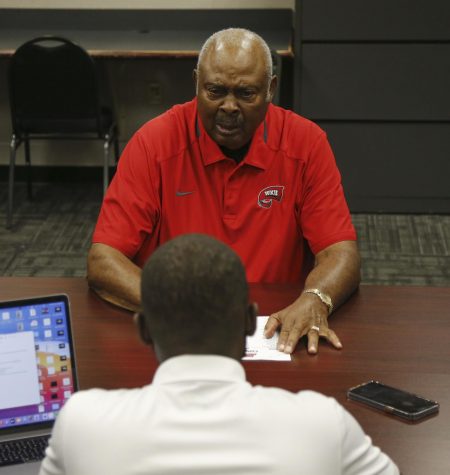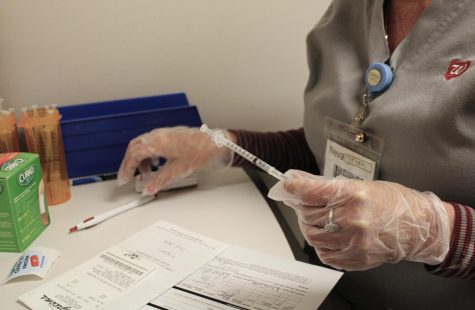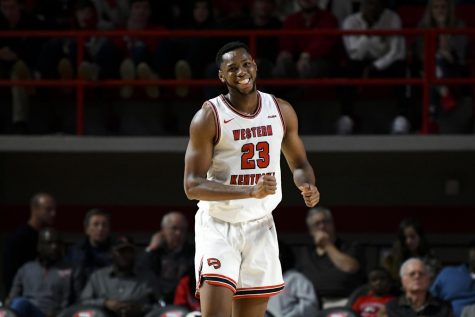Packers by position: In the wake of Jordan Love pick, will Aaron Rodgers respond with renewed motivation, determination?
July 19, 2020
GREEN BAY — Brian Gutekunst sat at the head of a long, cherry wood table and leaned forward in his leather chair. It was mid-February, and as the Green Bay Packers general manager was getting set for a trip to the annual NFL scouting combine in Indianapolis, he’d summoned a handful of writers to join him in the Vince Lombardi Boardroom inside Lambeau Field for a Q&A session before his departure.
His team was less than a month removed from its season-ending NFC Championship Game drubbing at the hands of the San Francisco 49ers, putting a demoralizing end to a surprisingly successful 13-3 season under first-year head coach Matt LaFleur.
Gutekunst fielded questions about everything from the team’s porous run defense in that loss to the Niners; to the success of defensive free agent pickups Za’Darius Smith, Preston Smith and Adrian Amos; to his own uneven drafting record; to the seemingly obvious need the team had at wide receiver; and to how large the gap might be between his team and San Francisco’s.
Near the end, the conversation turned to the quarterback position, and whether Gutekunst would consider using the team’s first-round pick, No. 30 overall, on an heir apparent to starter Aaron Rodgers, just as the team had done in 2005, when Rodgers fell into the Packers’ draft-day laps while retirement-mulling, future Pro Football Hall of Fame quarterback Brett Favre was still on the roster.
Gutekunst was asked nearly a dozen questions about the topic from a variety of angles, including whether he was concerned about ticking off the two-time NFL MVP and whether having a team so close to a Super Bowl berth might deter him from such a selection. After all, a year earlier, he’d seriously considered picking Missouri quarterback Drew Lock, who eventually went to Denver in Round 2, so the idea of taking a quarterback had clearly crossed his mind.
Amid all the questions about the drawbacks of such a pick, Gutekunst was asked if there might be a hidden benefit to Rodgers: that such a pick might spur on the 36-year-old after back-to-back down seasons statistically. The Rodgers pick in 2005 certainly appeared to have such an impact on Favre, who experienced a late-career renaissance while keeping Rodgers on the bench for three years of clipboard-toting.
Of course, 62 days after that meeting, Gutekunst did pick a quarterback, trading up in the first round to pick raw Utah State junior Jordan Love at No. 26 overall — 15 years to the day after his predecessor, Ted Thompson, had drafted Rodgers.
“I think in general, for all players, having competition usually elevates their game,” Gutekunst replied, cautiously. “You guys who know Aaron, I don’t know how much (he needs). (With) what he’s chasing and what pushes him, I don’t know if having another player in the room is maybe going to push him as much as it may (push) most.
“I think in general, competition always brings out the best in others. But he kind of creates his own competition every day.”
For his part, Rodgers insisted during a mid-May conference call with reporters during the COVID-19 interrupted offseason program that he didn’t need Love’s arrival to motivate him.
“I’ve never really needed a ton of external motivation,” said Rodgers, who finished the 2019 regular season having completed 353 of 569 passes (62.0%) for 4,002 yards with 26 touchdowns, four interceptions and 36 sacks for a passer rating of 95.4 — the third-lowest rating of his career. “You always maybe look for one or two things at different times in your career that kind of fire you up. For me, and I’ve said this at my locker many times, the main motivation is to be able to have consistent play as you get on in years.
“I feel really good about where I’m at physically. The goal is, obviously, to play into my 40s. That hasn’t changed. That’s what I’ve been talking about for the last few years. That remains the same. I know the key for that is my physical body and that’s what I focus on. That’s really my motivation is to give myself physically the opportunity to play as long as I want to play. That’s going to be my continued motivation.”
Whatever is driving him, be it his legacy or his now-friendly competition with Favre to win more Super Bowls or Love’s arrival, economics may decide Rodgers’ future as much as his play. He signed a four-year, $134 million extension in August 2018 when he had two years remaining on his existing deal, so his 13th year as the starter will be the first of the four years included in that extension.
The Packers could move on from him after the 2020 season and realize a small salary-cap savings of $4.76 million, even with $31.556 million in dead money left from Rodgers’ contract. If they moved on from him — by trading or cutting him — after the 2021 season, they’d save $22.648 million in salary-cap space while counting $17.204 million in dead money.
Or perhaps Rodgers will stay healthy and play so well that Love takes up permanent residency on the Packers’ bench. Whatever the case, the quarterback dynamic figures to be a primary storyline in Green Bay for years to come.
“(Playing my entire career in Green Bay) obviously is something that’s very important to me, but I think is definitely telling at this point that is truly something that’s out of my control,” Rodgers said. “What I can control is how I play and making that decision at some point a very hard one. You know, if I were to retire in the organization’s timetable, then it’s an easy decision. But if there comes a time where I feel like I can still play at a high level and my body feels great, you know, then there’s other guys that have gone on and played elsewhere.”
Here’s a closer look at the quarterback position as the Packers prepare for training camp, which is scheduled to begin for the full roster on July 28:
Depth chart
12 Aaron Rodgers: 6-foot-2, 225 pounds, age 36, 16th year from California.
10 Jordan Love: 6-4, 219, 21, rookie from Utah State.
8 Tim Boyle: 6-4, 232, 25, third year from Eastern Kentucky.
7 Jalen Morton: 6-3, 237, 23, rookie from Prairie View A&M.
Burning question
Will Brian Gutekunst’s selection of Jordan Love prove fantastic or foolhardy?
For better or worse, the Packers general manager has tied his long-term reputation — and, frankly, employment — to his decision to trade up to select Love. The two GMs who built Super Bowl champions during the team’s renaissance — Ron Wolf and Ted Thompson — both got their future Hall of Fame signal-callers early in their tenures: Wolf by trading for Brett Favre in February 1992; Thompson by drafting the free-falling Aaron Rodgers in 2005. Now Gutekunst has cast his lot with Love, whose numbers dipped significantly during his last year at Utah State after departures and injuries stripped the offensive depth chart of most of its starters.
“We thought he had the kind of skill set that could play up here and will have a chance to be a pretty solid quarterback in the National Football League,” Gutekunst explained on draft night. “We know how important that position is and I just think whenever you get an opportunity to add a player to that position you have to consider it. And we did.”
On the rise
Boyle
Under normal circumstances, Boyle, who made the team as a pleasant surprise in 2018 and beat out former Browns second-round pick DeShone Kizer for the primary backup job in camp last summer, might be in peril given the investment the Packers made in Love. But with COVID-19 forcing the entire offseason program into the virtual realm, meaning Love has yet to take a single snap even against air in the Packers offense, it’s hard to imagine the team going into the scheduled Sept. 13 opener at Minnesota with Love one snap away from being in the game. Rather, the prudent move would be to keep Boyle at No. 2, even though he’s yet to take a meaningful NFL snap himself. At least he has a year in the system and understands vastly more of Matt LaFleur’s offense than the new kid.
“He became a pro last year,” quarterbacks coach Luke Getsy said of Boyle. “I thought when the competition for the backup role ended, he opened up tremendously and grew so much. He really did. So I think as you have an opportunity to sit, watch, listen and learn and hear from Matt and hear from (offensive coordinator Nathaniel) Hackett, from myself, watch Aaron and listen to Aaron communicate things, he got to do that for two years now. I think Tim, the mental part of his game is at a whole other level now. We’re so lucky to have him, especially at a time like this when we aren’t able to be together as much as we usually are.”
Player to watch
Rodgers
As much as LaFleur tried to downplay it, it’s hard not to think a paradigm shift in offensive philosophy is coming in Year 2 of his offense. A colossal believer in the importance of running the football, LaFleur now has an additional running back (second-round pick AJ Dillon) to utilize in the ground game, and considering the only passing-game addition was inexpensive veteran wideout Devin Funchess, the Packers could be a run-heavy outfit designed to lessen the burden on its aging, star QB.
Considering last year’s offense was a hybrid of LaFleur’s scheme and the remnants of ex-head coach Mike McCarthy’s system, it’ll be interesting to see how Rodgers’ role evolves and whether an altered approach offensively helps him return to his usual gaudy numbers, much like Favre saw his stats spike in 2003 when running back Ahman Green was setting the franchise’s single-season rushing record under run-oriented head coach Mike Sherman.
“We were blending some of the things Matt loves to do with a few of the things I’ve done well over the years (last season),” Rodgers said. “There’s a lot of moving pieces, and when you don’t have that physical offseason, I think it’s too early to make any type of expectations or predictions about who’s going to be playing where, what type of roles, or exactly what we’re going to do until we see abilities of some of these guys that we brought in and see some of the jumps we have from guys in Years 2 and 3.”
Key competition
Backup
Back when Rodgers was a hotshot rookie first-round pick in 2005, there was another quarterback in camp in addition to Favre and his new understudy: Craig Nall, who was on his second tour of duty as a backup. Truth be told, as he transitioned from the college game to the pros under then-head coach Mike Sherman and then-offensive coordinator Tom Rossley, Rodgers was the third-best QB in camp that year, but he still wound up as the No. 2 behind Favre. While the impact of COVID-19 on the offseason surely has given Boyle a significant advantage entering camp, he obviously can’t coast and just assume the gig is his.
“When you’re around a dude who throws like Aaron, (you learn a lot). He’s definitely rubbing off on me,” Boyle said. “I obviously have my own style and my own rhythm, but being around him has really improved my game both physically and mentally. I feel more comfortable. I feel like I belong. I definitely feel like my confidence is on the rise.”

